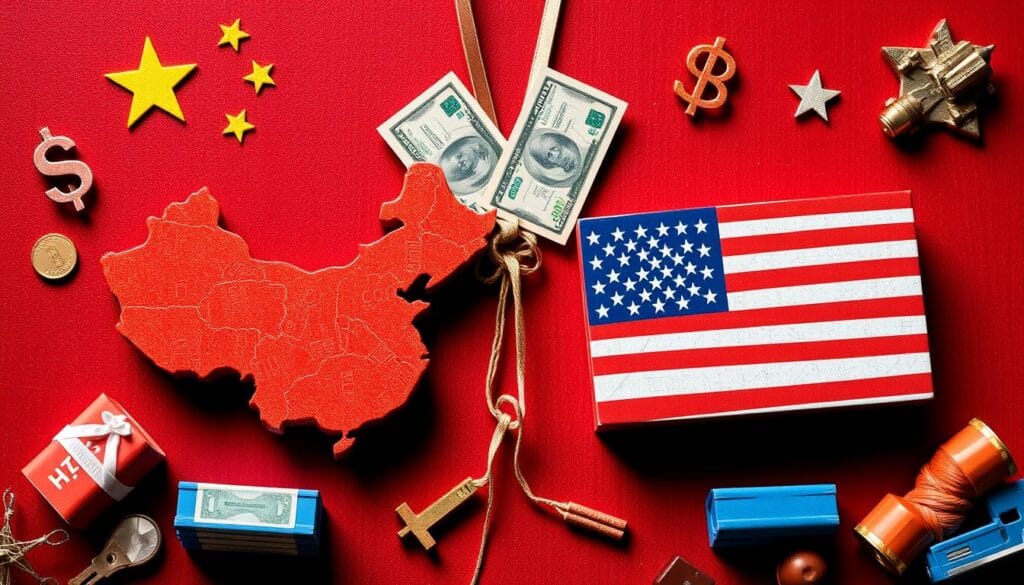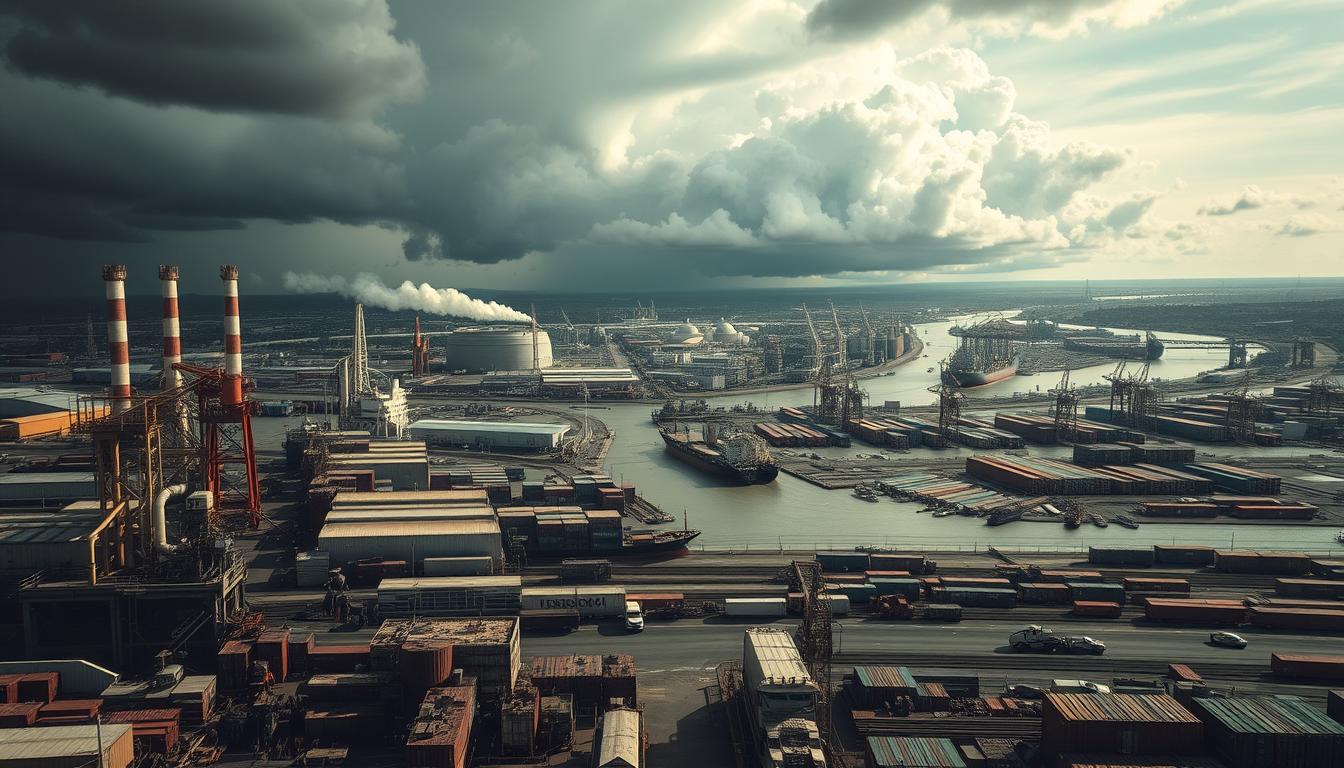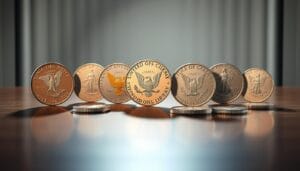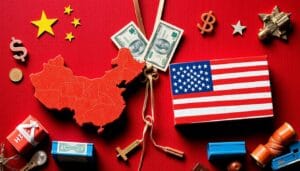Tariffs Crippling the U.S. Economy: Causes and Consequences.
Explore how tariffs crippling the U.S. economy affect growth, with insights on trade war impacts and international trade challenges.

Tariffs Crippling the U.S. Economy
Tariffs are at levels not seen in decades, and the economic impact is clear. Nathan Sheets, a former U.S. Treasury official, says the trade war is affecting us now. Consumers are already paying 30%–40% of the costs and could soon pay closer to 60% as prices rise.
Early signs indicate price hikes in categories with a high volume of imports. Audio gear, furniture, and tools are seeing significant increases. Retailers are preparing for holiday and New Year sales, knowing their stock will soon run out.
Michael Gapen at Morgan Stanley calls tariffs a tax on capital. This squeeze on margins and stalled investments puts pressure on consumers. With high U.S. wages, companies may turn to automation, making processes more efficient but not necessarily hiring more people.
The market’s mood reflects the seriousness of the situation. Tariffs are affecting everything from clothes and cars to oil and medical equipment. A detailed analysis of imports hit hardest highlights the scope of the problem. The effective tariff rate is at a high not seen in the 1940s, with Canada, Mexico, and China playing key roles, as explained in a review of the macroeconomic ripple effects.
Markets have experienced significant fluctuations, including a recent crash and subsequent rebound. These moves were influenced by changes in China’s tariffs and shifts in sectors, as noted in a historic stock market crash and a tariff-fueled rebound. These events show tariffs are severely impacting the U.S. economy, affecting prices, profits, jobs, and confidence.
Tariffs Crippling the U.S. Economy Key Takeaways
- Consumers are absorbing a rising share of tariff costs as firms pass through higher import prices.
- Price increases are clustering in import-heavy categories and key retail windows.
- Tariffs act like a tax on capital, compressing margins and curbing new investment.
- Reshoring will likely be capital‑intensive, favoring automation over large hiring waves.
- Market volatility underscores the increasing impact of the trade war and global trade challenges.
- Policy choices now risk reinforcing tariffs, crippling the U.S. economy if retaliation spreads.
Tariffs Crippling the U.S. Economy
Tariffs make everyday items more expensive and change how companies price their products. As import costs rise, their effects spread through supply chains. This leads to higher prices for consumers and delayed plans, which in turn slow down economic growth.
Consumer Pass-Through and Inflation Pressures
Now, households bear a bigger part of tariff costs. Experts say inflation pass-through could reach over half as buffers disappear. Prices for items such as audio equipment, furniture, and hardware are increasing, impacting consumer prices in many areas.
Shoppers feel the pinch most in items that rely heavily on imports. Price increases can be uneven, but the real cost is clear in official data. This is reflected in monthly budgets, where people and businesses are cutting back, thereby slowing economic growth.
Retail Pricing Windows and Inventory Dynamics
Retailers initially used old stock purchased before the tariffs. That’s running out, setting the stage for price hikes during holidays and the New Year. This approach softens the shock but keeps inflation moving.
When prices rise too fast, shoppers get nervous. This can lead to panic buying and stockouts, like when a 10% tariff hit Costco. As stock turns over, the actual cost of tariffs becomes clearer on shelves and in receipts.
Capital Tax Effect and Business Margin Squeeze
Executives often see tariffs as a tax on capital. Initially, they absorb costs in their margins, delaying price hikes to consumers. But higher costs and freight squeeze cash flow, forcing new pricing strategies and deeper inflation.
As the buffer wears off, firms face tough choices on investment and hiring. This leads to slower growth, with weaker cash flow and pricier parts. This pressure hits sectors that depend on imported parts and materials hard.
| Indicator | What’s Changing | Why It Matters | Illustrative Evidence |
|---|---|---|---|
| Household Burden | Rising share of tariff costs borne by families | Direct lift to consumer prices and trimmed spending | Estimated pass-through moving toward majority share |
| Retail Inventory | Pre-tariff stock depleted | Upcoming price resets in holiday and New Year windows | More visible tags as new, higher-cost goods arrive |
| Margins | Compression from higher inputs | Less room to absorb shocks; investment delays | Capital is treated as a buffer until pricing shifts occur |
| Shopper Behavior | Stockpiling and timing purchases | Demand swings that complicate ordering and staffing | Holiday price windows and episodic surges in select categories |
Recent reports show how tariffs affect households, farmers, and trade balances. For more context, see this analysis of tariff impacts.
Trade Policy Implications for Manufacturing, Jobs, and Global Trade
Tariffs are altering how factories operate and how goods are transported globally. This affects everyone at home. It’s not just about prices. It also determines where companies invest, the number of jobs they create, and whether supply chains can handle the resulting stress.
Reshoring vs. Automation: Fewer Jobs, More Capital Intensity
Some factories may return to the U.S., but labor costs are high. Many will opt for machines over hiring more staff. This move towards using more machines is similar to past changes, where more was made with fewer workers.
This change means more job opportunities for skilled workers, such as engineers and data analysts. But jobs that involve doing the same thing over and over might decrease. These changes affect the number of people working, even if factories are closer to their customers.
Supply Chain Reconfiguration and Import Substitution Limits
Companies attempted to avoid tariffs by stockpiling goods. However, they are now facing thinning inventories. They must either pass on costs, change where they source goods, or invest in more automation. Yet, making things locally is hard in areas that need a lot of labor or specialized parts.
High-value parts are more likely to be made locally. But jobs that require a lot of labor will likely stay overseas. For a detailed examination of how tariffs could impact the economy, consult this economic analysis. It shows how GDP could change under different scenarios.
Risk of Retaliation and Systemic Fracture
Allies have been patient so far, but history shows that things can escalate quickly. In the automotive sector, a tariff dispute between the U.S. and Canada illustrates how one issue can impact jobs and investment across borders. For more on this, see this article on auto trade tensions.
As tariffs affect more everyday items, prices are expected to rise. This could lead to further retaliation, exacerbating the situation. A recent report shows how spending has changed due to the U.S.–China trade war. It gives insights into what the future of supply chains might look like.
Tariffs Crippling the U.S. Economy: Conclusion
Tariffs are increasing costs and slowing economic growth. Nathan Sheets and Michael Gapen say companies can’t keep up with rising costs. The cost increase is now around 60%, up from 30% to 40% previously.
Prices are already increasing for items such as audio equipment, furniture, and tools. Once these items are sold out, prices will rise even more. This will affect many everyday items and big purchases.
Production is also changing. Companies are relocating jobs back to the U.S., but are increasingly using automation as an alternative. This means more investment, but fewer jobs than expected. It’s like a hidden tax on businesses, making it harder for them to grow.
Other countries are watching closely. If the U.S. continues to use tariffs, it may retaliate. This could harm U.S. exports and exacerbate trade issues. See this overview for more on the risks.
We need a new approach to trade. Updating our trade rules could prevent big problems. Sheets believes that with the right reforms, we can fix these issues and boost economic growth.









